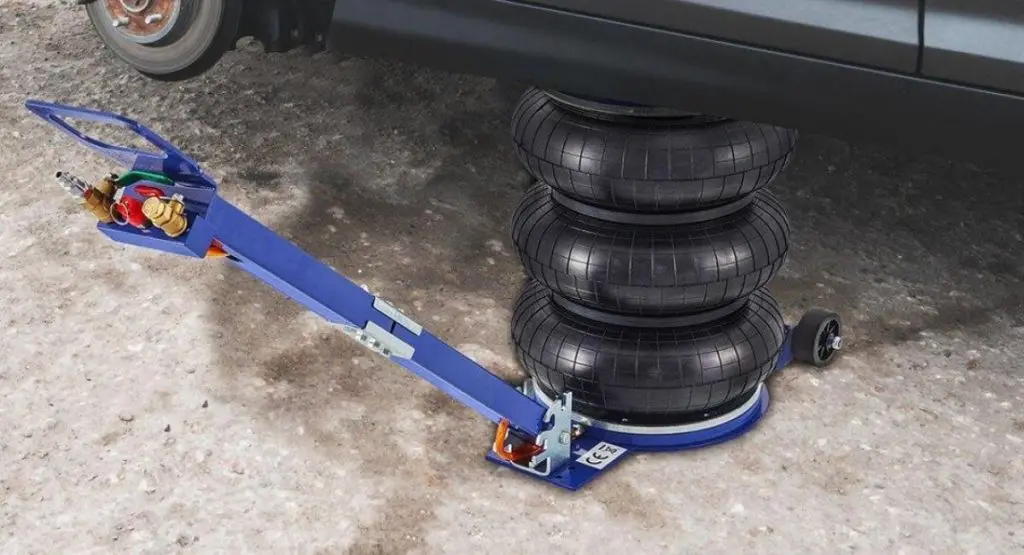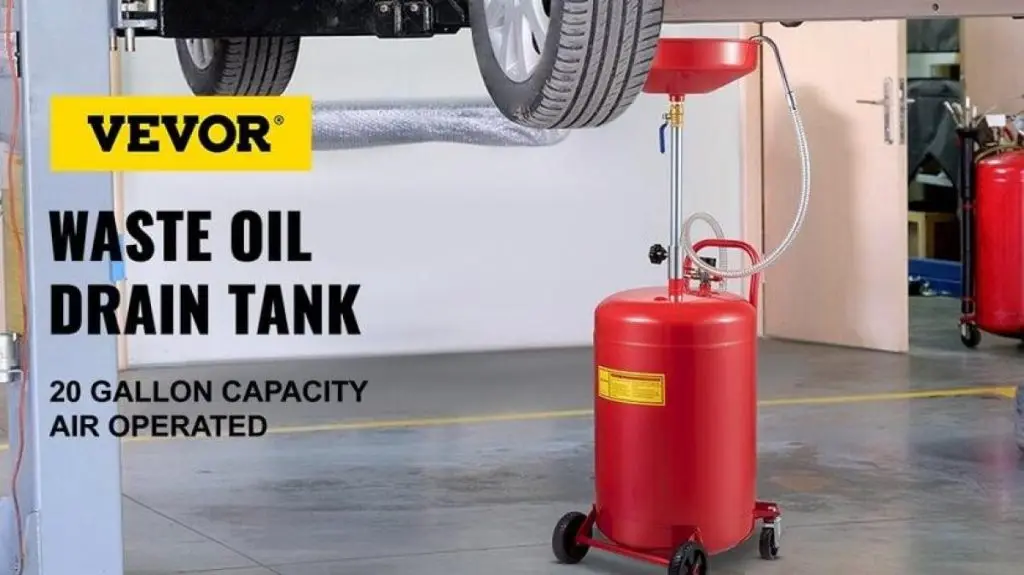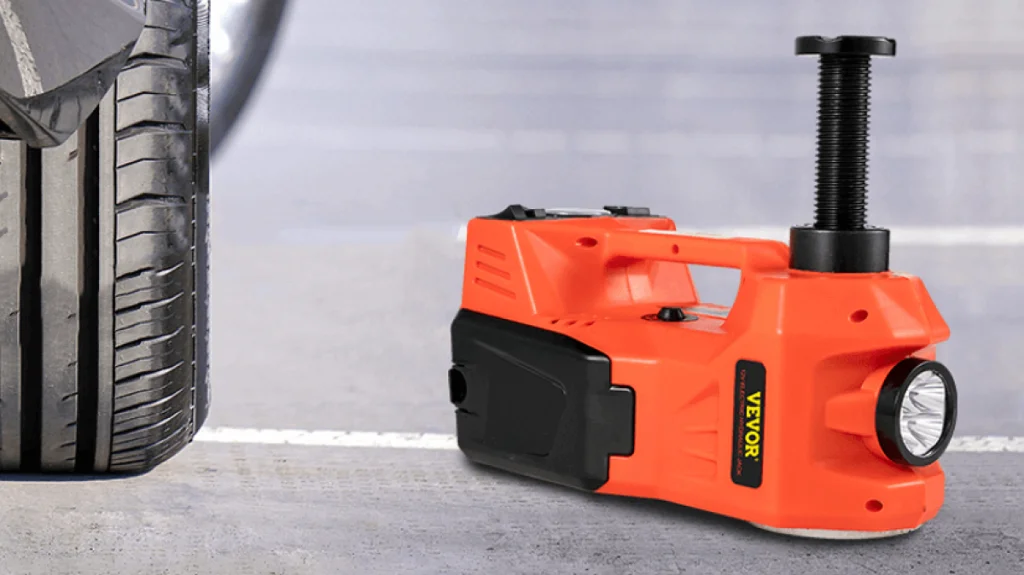Whether you’re an avid off-road enthusiast or a seasoned camper, a winch is an indispensable tool for tackling challenging terrains, rescuing stuck vehicles, and hauling heavy loads. Mounting a winch to a trailer transforms it into a versatile and dependable companion for your outdoor adventures.
If you have a winch but do not know how to mount a winch on a trailer, continue reading. This comprehensive guide delves into the process of mounting the winch to a trailer in detail. We explore the benefits of mounting a winch to a trailer to help you decide if you have been sitting on the fence about it. We will provide a step-by-step guide for successful car trailer winch mounts, and along the way, we will highlight essential safety measures and address frequently asked questions to ensure your winch installation is safe and efficient.
So, let’s get started.
Table of contents
Why Mount a Winch on a Trailer?
Venturing into the great outdoors, you often encounter unexpected challenges, from navigating rough terrains to rescuing stuck vehicles. In such challenging situations, having a winch mounted on your trailer proves to be an invaluable asset. Here are a few reasons why you should consider mounting a winch on the trailer:
1. Conquering Challenging Terrains
Whether you’re traversing rugged mountain trails or exploring remote backcountry, you might encounter obstacles that seem insurmountable, hindering your progress. In such circumstances, a winch—with its majestic pulling power—can be your lifeline, effortlessly extracting your vehicle from mud, snow, or rocky terrain, allowing you to continue your journey without interruption.

2. Rescuing Stuck Cars and Equipment
Mishaps can occur even on seemingly smooth roads. Whether it’s a car stuck in a ditch or heavy equipment bogged down in soft ground, a winch can provide the necessary assistance to extract the vehicle or equipment safely and efficiently.
3. Loading and Unloading Heavy Objects
Loading and unloading heavy objects, such as ATVs, motorcycles, or boats, can be a strenuous and time-consuming task. By employing the pulling power of a winch, you can take the strain off your back and make heavy loading and unloading a seamless task.
4. Enhancing Safety and Peace of Mind
After mounting a winch to a trailer, you can embark on your outdoor adventures with a sense of security and preparedness. The knowledge that you have the means to overcome unexpected challenges instills confidence and allows you to fully embrace the thrill of the great outdoors.
5. Increasing Trailer Versatility
Mounting a winch on a trailer extends its functionality beyond mere transportation. Having a winch mounted on your trailer, you can also use it for off-road vehicles and the maneuvering, loading, and unloading of heavy objects.
6. Emergency Situations
In emergencies, a winch can serve as a potential lifesaver. If your vehicle becomes stranded in a remote location or harsh weather conditions, a winch can provide the means to rescue yourself and others.
7. Investment in Your Outdoor Adventures
Mounting a winch on your trailer is a worthwhile investment in your outdoor adventures. It equips you with the tools and capabilities to tackle various challenges, ensuring you make the most of your off-road explorations and camping trips.

If you have made the investment in your outdoor adventures and have bought a winch and are wondering how to mount a winch on a trailer? Here is a detailed installation guide for installing a winch on a trailer.
Step-by-Step Guide: How to Mount a Winch on a Trailer
Mounting a winch on a trailer may seem like a daunting task, but with the right preparation and guidance, you can accomplish it with confidence. This step-by-step guide will take you through the entire process, ensuring a successful and secure installation.
Pre-Installation Preparation
Assessing Your Trailer and Winch Compatibility:
Before diving into the installation process, it’s crucial to ensure compatibility between your trailer and the winch you’ve chosen. Consider the following factors:
- Trailer Weight Capacity: Ensure the winch’s pulling capacity is compatible with the maximum weight your trailer can safely handle.
- Mounting Plate Compatibility: Check if the winch mounting pattern matches the bolt pattern of your trailer’s mounting plate or the mounting plate you intend to use.
- Electrical Compatibility: Verify that the electrical system of the winch matches your trailer’s electrical system voltage.
Gathering Necessary Tools and Materials:
To ensure a smooth and efficient installation, gather the following tools and materials:
- Safety Glasses and Work Gloves: To protect your eyes and hands from debris and potential hazards.
- Socket Set and Wrenches: To tighten and loosen bolts and nuts securely.
- Drill and Screwdriver: To create pilot holes and drive screws for additional support.
- Wire Cutters and Strippers: To prepare the electrical wires for connection.
- Electrical Tape: To secure and insulate electrical connections.
- Leveling Tool: To ensure the winch is mounted level for proper operation.
- Mounting Plate (if not included with the winch): To provide a sturdy base for attaching the winch to the trailer.
Installing the Winch
1. Choosing the Right Location on the Trailer
Before you begin mounting the winch to the trailer, you need to pick a suitable location for it. Select a mounting location that provides easy access for operation and maintenance. Also, make sure that there is adequate clearance for the winch cable and fairlead. Usually, the winch is mounted at the front of the trailers in the middle, but you may want to choose a different mounting position depending on your needs. Consider the following factors:
- Accessibility: Choose a location that allows for easy access to the winch controls, cable spool, and fairlead.
- Clearance: Ensure the winch cable and fairlead have sufficient clearance to avoid obstructions during operation. If the cable is putting any pressure along the back of the trailer, it could end up damaging the cable itself or the trailer.
- Weight Distribution: Consider the winch’s weight when selecting a mounting location to maintain balanced trailer weight distribution.
2. Mounting the Winch Properly:
Once you have chosen an ideal position for mounting the winch on the trailer, you can go ahead and begin the mounting process.
- Position the Winch: Place the winch on the chosen mounting location, aligning the mounting holes with the corresponding holes on the trailer or mounting plate.
- Secure the Winch: Use bolts, nuts, and washers to secure the winch firmly to the trailer or mounting plate. Tighten the fasteners securely using a socket set or wrenches.
- Level the Winch: Use a leveling tool to ensure the winch is mounted level. This is crucial for proper cable spooling and winch operation.
3. Wiring and Electrical Connections:
Once you have mounted the winch on the trailer, it’s time to set up electrical connections.
- Identify Electrical Leads: Locate the electrical leads on the winch and the corresponding wires on the trailer’s electrical system.
- Connect Wires: Strip the ends of the wires and connect them using heat shrink connectors or electrical tape. After making connections, double-check if they are properly secured and insulated.
- Test Electrical Connections: Connect the winch to a power source and test the winch’s operation to ensure the electrical connections are correct.
4. Securing the Winch for Optimal Performance:
Once the winch is properly mounted on the trailer and you have double-checked the electrical connections, do the following to get the winch functional.
- Cable Installation: Install the winch cable according to the manufacturer’s instructions. Ensure the cable is securely spooled on the drum and the fairlead is properly aligned.
- Grounding: Connect the winch’s grounding wire to a suitable grounding point on the trailer. This ensures proper grounding and safety.
- Testing and Troubleshooting: Conduct a thorough test of the winch’s operation, including cable retraction and extension, to ensure it functions correctly. If any issues arise, consult the manufacturer’s troubleshooting guide or seek assistance from a qualified technician.
If you experience an issue with one of VEVOR’s electric winches, you can reach out to our customer support team, which is available round the clock to help you out on every step of your VEVOR journey.
Recommended For Your Project
VEVOR Electric Winch: Your Reliable Off-Road Trailer Helper
When it comes to selecting a winch for your off-road trailer, you need to make sure that you get one from a reliable brand. You do not want your winch to break or give up on you when you need it the most. For maximum pulling power and efficiency, you must go to a trusted brand such as VEVOR that stands out for delivering tough tools at highly affordable prices.
Our electric winches are renowned for their durability, reliability, and ease of use, making them ideal companions for your outdoor adventures. For instance, this 12V 13,000 lb Load Capacity Nylon Rope Winch features a 3-stage Planetary Gear for higher performance and better stability. It features a wireless remote, allowing you to control operations from a safe distance. The winch rope is a 12-strand high-strength nylon cable that can work in all sorts of environments, muddy and even underwater. It is fully waterproof and can be used on various types of vehicles, including ATVs, medium to large SUVs, trucks, and even yachts, under its rated pulling force.

Safety Measures During Installation
When mounting a winch to a trailer, you must ensure your safety throughout the installation process to prevent injuries and property damage.
1. Wear Protective Gears
Before you begin to mount a winch on a trailer, you must put on protective gear such as safety glasses and gloves. Where glasses will help protect your eyes from potential flying debris and sparks, sturdy work gloves will protect your hands from potential injuries that may occur when handling the heavy winch or drilling holes, etc.
2. Clearing the Work Area
When mounting a winch to a car trailer, consider selecting a well-lit and level area for maximum visibility and stability. Also, consider clearing out any clutter or obstructions in the workspace to prevent tipping hazards.
3. Winch Handling
The winch can be quite heavy, so exercise caution when lifting and maneuvering the winch to prevent injury from its weight. Make sure that you have your sturdy work boots and gloves on.
4. Electrical Safety
Disconnect the trailer’s battery before making any electrical connections. Use insulated electrical tools and connectors to prevent electrical shocks. If you lack experience and are unable to make sense of the wires, consider taking the help of a qualified electrician.
5. Secure Mounting
Follow the manufacturer’s instructions carefully to ensure proper mounting and bolt tightening. Use the correct mounting hardware and torque specifications to prevent the winch from becoming loose or dislodged.
6. Testing and Troubleshooting
Conduct a thorough test of the winch’s operation in a controlled environment before using it in actual situations. If any issues arise during testing, consult the manufacturer’s troubleshooting guide or seek assistance from a qualified technician.
FAQs about Mounting a Winch to a Trailer
Q: Can I install a winch on any trailer?
In general, yes, you can install a winch on any trailer that has a sturdy frame and sufficient weight capacity to handle the winch’s pulling power. Before mounting a winch on a trailer, make sure that the trailer can support the winch’s weight and winch pulling force does not exceed the trailer’s maximum weight capacity.
Q: What tools do I need for winch installation?
The tools you’ll need for winch installation on a trailer will depend on the specific winch model and trailer configuration. However, generally, for mounting a winch on trailers, you will need safety gear like glasses and gloves, a socket set, wrenches, a drill, screwdrivers, wire crimpers, electrical tape, heat shrink connectors, a leveling tool, a measuring tape, and a mounting plate.
Q: What size winch do I need for a car hauler trailer?
The size of the winch you need for a car hauler trailer depends on the weight of the vehicles you’ll be loading. A general rule of thumb is to choose a winch with a pulling capacity of at least 1.5 times the weight of the heaviest vehicle you’ll be hauling. For example, if you plan to haul a car that weighs 4,000 pounds, you’ll need a winch with a pulling capacity of at least 6,000 pounds.
Q: Do I Need a Mounting Plate for My Winch?
Whether or not you need a mounting plate for your winch depends on the design of your trailer and the winch itself. If your trailer has a designated winch mounting area, you may not need an additional mounting plate. Also, some winches come with mounting plates included. But if your trailer does not have a designated winch mounting area and a mounting plate does not come with the winch, you’ll need a mounting plate to provide a sturdy base for attaching the winch to the trailer.
Conclusion
Getting a winch for your trailer is a valuable investment that enhances the versatility and functionality of your trailer. By following the step-by-step guide and safety measures outlined in this article, you can successfully mount a winch on a trailer and your safety and peace of mind when embarking on outdoor adventures. With a winch on your trailer, you can tackle rugged terrains, rescue stuck vehicles, and load and unload heavy objects with ease.
To ensure that your winch does not give up on you when you need it the most, consider getting one from VEVOR, which is known for its tough winches.




